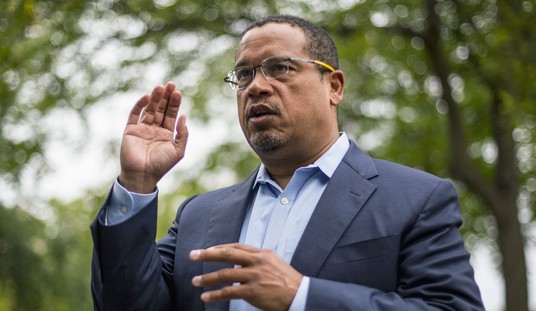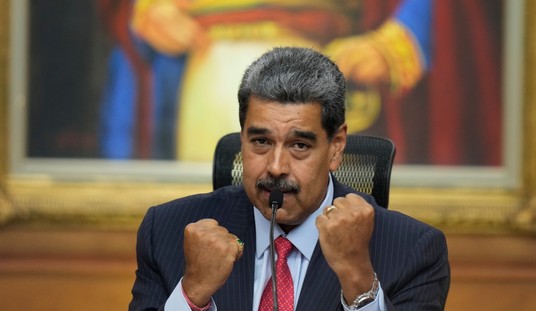Just how much does Congress and the White House plan to spend on the all-but-inevitable Phase 4 pandemic relief bill? They have already authorized $3 trillion in emergency spending, some of which has yet to be disbursed, a sum that normally would be about three-quarters of an annual federal budget. Everyone now wants to spend even more off-the-books money as the crisis waxes and wanes, perhaps most especially on some sort of direct-stimulus payments.
So where does the bidding start? It had better be higher than a trillion dollars, Nancy Pelosi declared today, scoffing at calls to limit the red ink. Politico reports that just the state and local aid Pelosi wants adds up to that much, and then she’d consider the GOP’s priorities as an addition. But Pelosi’s happy that Republicans are asking to spend more money these days:
“Oh, it can only be a trillion dollars,” Pelosi said Thursday, scoffing at the GOP’s proposed price tag and laying out her own demands. “No, we need a trillion dollars for state and local. We need another trillion dollars for unemployment insurance, and direct payments.” …
“A trillion dollars is ok, that’s an interesting starting point. But that doesn’t come anywhere near,” Pelosi said at her press conference.
Mitch McConnell’s in the mood to spend, too, but he’s not going to double up on the imaginary cash that’s already gone out the door. He told reporters today that the Senate wouldn’t pass another $3 trillion in relief spending, so Pelosi might need to get her red pen handy:
In appearances in Kentucky this week, McConnell has laid out broad outlines of the GOP plan, which include liability protections for companies, aid to schools and money for hospitals and businesses. On Wednesday, McConnell himself rejected the price tag put forward by Democrats — “It won’t be $3 trillion,” he said — and predicted the next round of talks would be “more contentious than the last one” due to the proximity to the 2020 elections.
“There’s a lot more elbowing going on,” McConnell said to reporters in Winchester, Kentucky. “We will be, as we try to work our way through this, confronting more headwinds because of the proximity to the election.”
Don’t forget about the White House, which is also eager to get more money out the door. Mike Pence threw in a wrinkle yesterday in suggesting that Trump might demand financial incentives for states to reopen their schools as the price to avoid a veto, regardless of the size of the package:
“As we work with Congress on the next round of state support, we’re going to be looking for ways to give states a strong incentive and encouragement to get kids back to school,” Pence said.
Democrats were perplexed.
“I don’t know what he’s talking about,” Murray said. “The most important thing is that we actually make sure students, our families, our educators stay safe and determine how to reopen either in person or distanced learning. … So I don’t know what he’s saying. You just have to randomly open schools and take your chances or you’re not going to get any state aid? I mean that’s an absolutely no.”
That’s not the only negotiating leverage being put on the table today. The administration and the GOP has warmed up to another round of stimulus payments, but the question is how broad the payments will be. They want to keep the upper limit somewhere below the previous $75,000-annual-income per person level of the first round. McConnell wants it capped at $40K, but that’s just an opening bid, CNBC reported this morning:
And restricting the extent of the aid could prove unpopular during a national emergency. Limiting the next round of stimulus checks to those earning under $40,000, for instance, would save lawmakers about $200 billion compared to the first round of checks, according to Ernie Tedeschi, who served as an economist in the Obama administration. It would also mean that 20 million fewer middle class Americans would not receive the financial lifeline. …
The plan to scale back the benefit poses another challenge because the Treasury Department bases eligibility for the checks off taxpayers’ 2019 income statements. Americans who earned more than $40,000 last year but have seen their incomes drop dramatically or disappear since then would not receive a stimulus check, despite their suffering, if the new threshold is adopted.
At least 4 million private sector workers have seen pay cuts during the pandemic, according to a previous Washington Post analysis, and many of them are likely to slip below the income threshold. The unemployment rate initially jumped to nearly 15 percent in April, up from 3.5 percent in February. In June, it was 11 percent.
In other words, that kind of limitation might miss a number of people who should get some sort of support, assuming support should be given at all. But just how workable is that kind of plan? Treasury stumbled over even the basic caps in the first round, and anything more complex is probably going to delay payments by weeks if not months. That, and the politics of Free Stuff, probably will doom those limitations anyway:
One Republican tax expert, who spoke on the condition of anonymity to discuss private deliberations, predicted the GOP would probably back off plans to curb the payments due to the administrative hurdles in effectively targeting the funding. The GOP will also face political pressure not to curb stimulus payments during an election year for middle class households.
Steve Mnuchin confirmed on CNBC that the Trump administration was getting behind some form of direct stimulus as part of their recommendations. They want the rest of the package to be limited to, uh … two trillion dollars. Plus, they want unemployment bonuses to be retooled to remove any disincentives for returning to work:
Speaking to CNBC on Thursday, Mnuchin said “we do support another round” of stimulus checks to individuals, after most Americans received a $1,200 sum as part of the $2 trillion rescue legislation passed in March.
But he did not say whether he backed a potential $40,000 income cap floated by GOP lawmakers — lower than the $75,000 where the previous payment started to phase out. Mnuchin noted that he spoke to Senate Majority Leader Mitch McConnell, R-Ky., on Wednesday and would discuss the “level and criteria” for checks with senators when they return to Washington.
The Treasury secretary also addressed one of the most urgent issues Congress faces in the talks: an income cliff millions of people will face at the end of July when the $600 per week enhanced federal unemployment benefit expires. Even though the economy gained nearly 5 million jobs in June, the unemployment rate dropped to a still staggering 11.1%. …
“You can assume that it will be no more than 100%” of a worker’s usual pay, Mnuchin said. He echoed Republicans who argue the generous insurance deters some people from resuming work because they make more at home than they otherwise would at their jobs.
Let’s just cut to the chase. Congress will do what it normally does when confronted with competing bargaining lines on spending. It will settle on the higher number in the end, and its proximity to that target will get closer in direct proportion to how close we are to the next election. American voters don’t want austerity and fiscal responsibility — they want Free Stuff, especially when it’s the government that has cut off or restricted their buying power in this pandemic. The best fiscal hawks can hope to get out of this is the fix on unemployment bonuses, and even that might be a Sisyphean task four months out from a general election.








